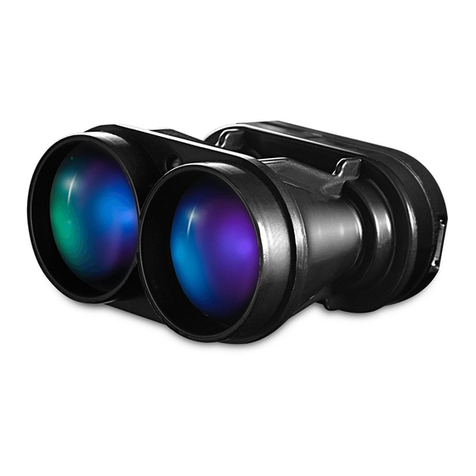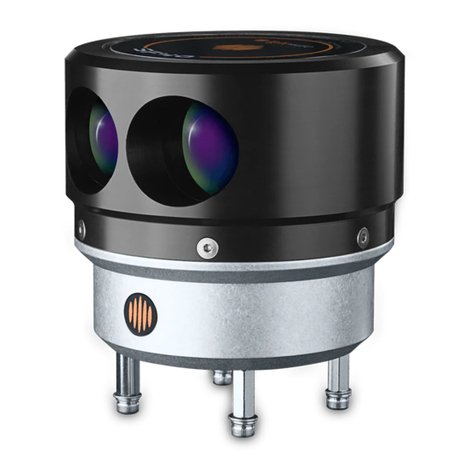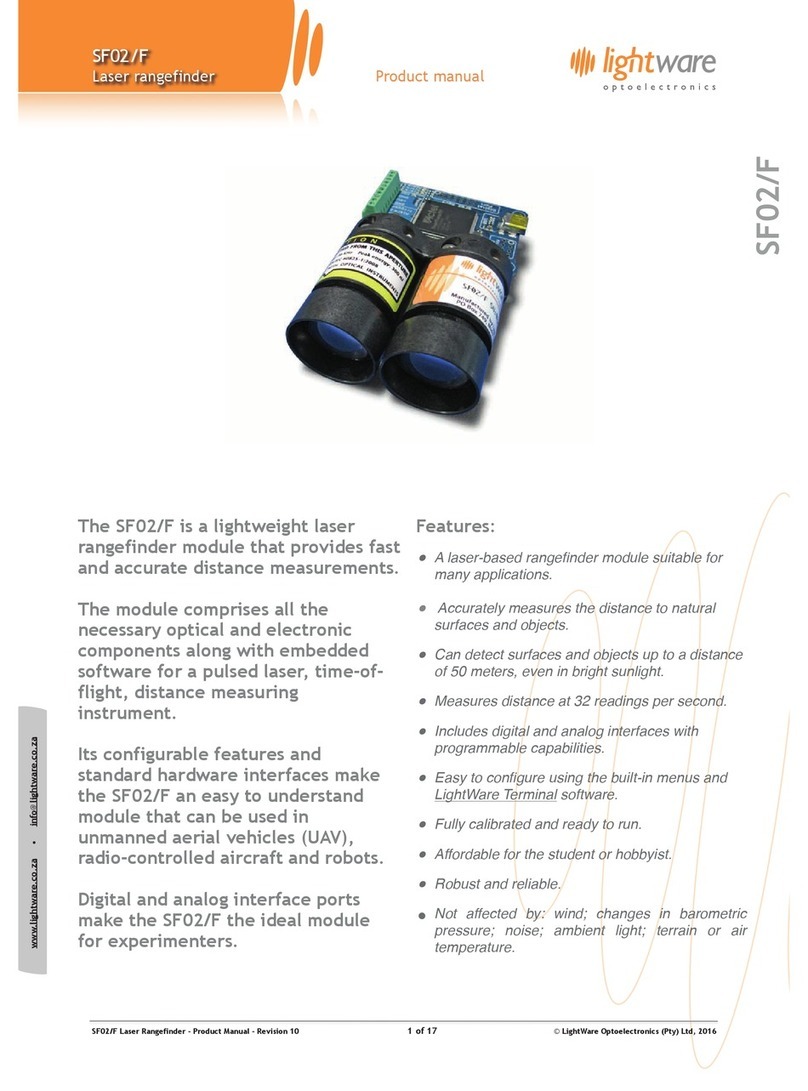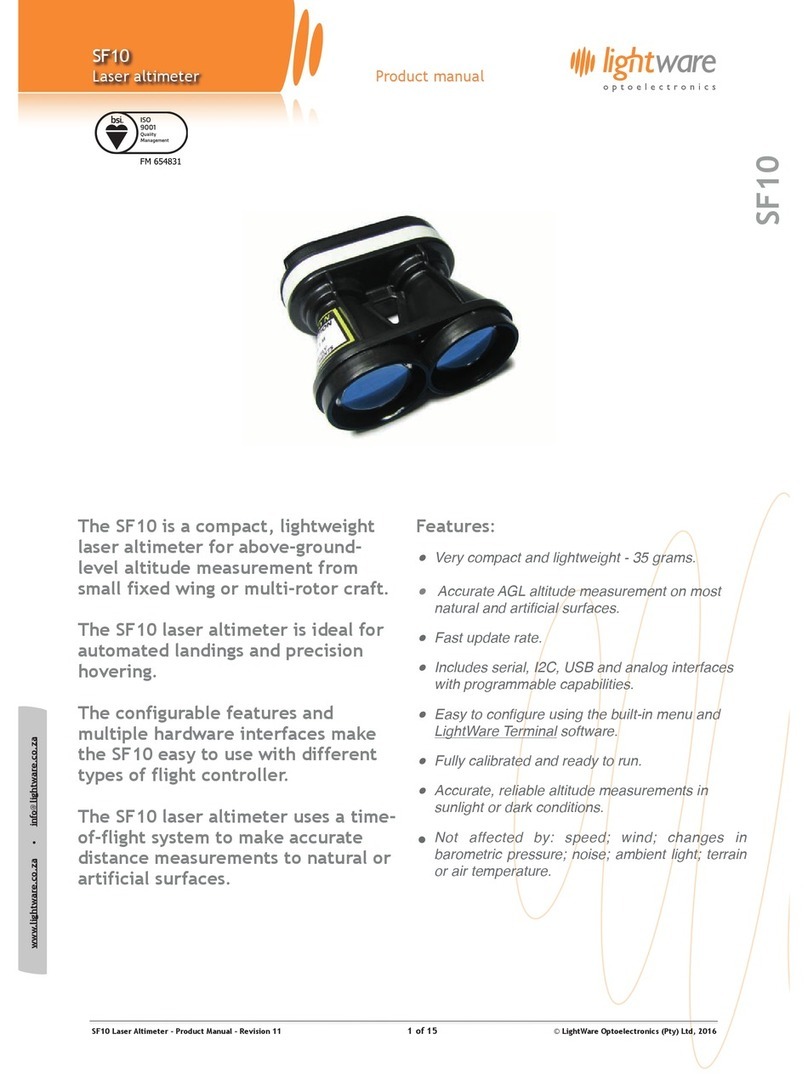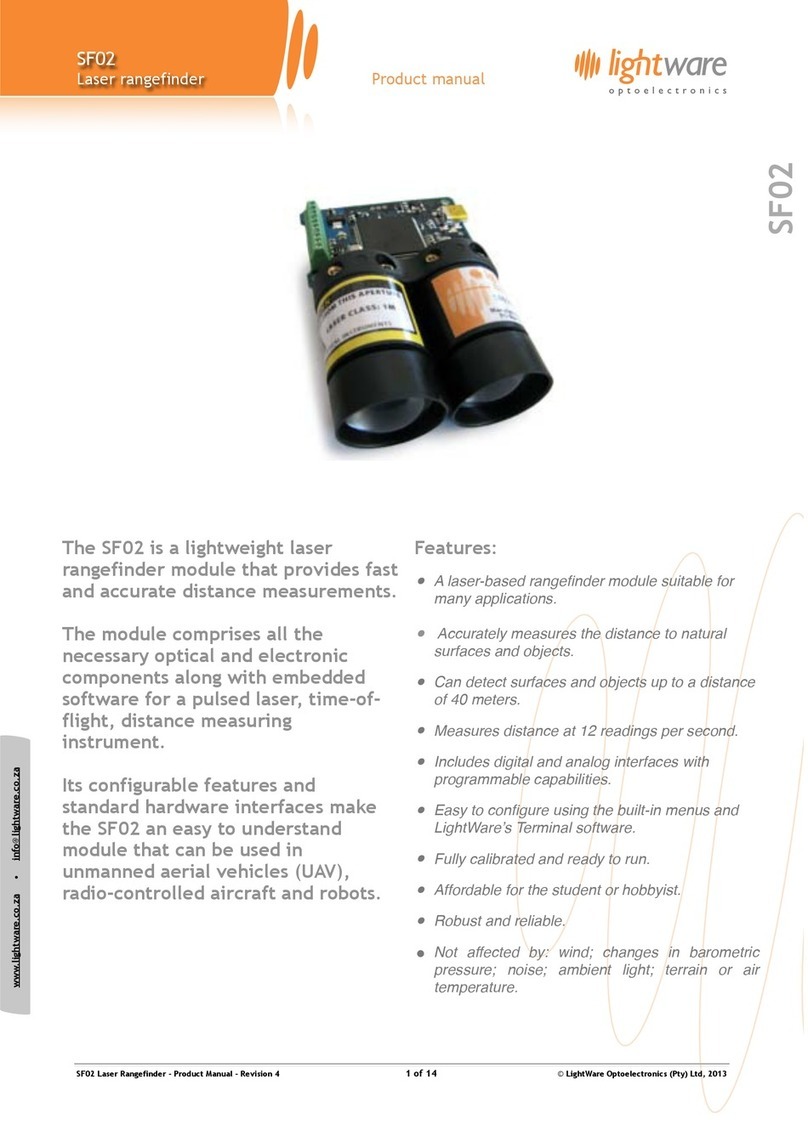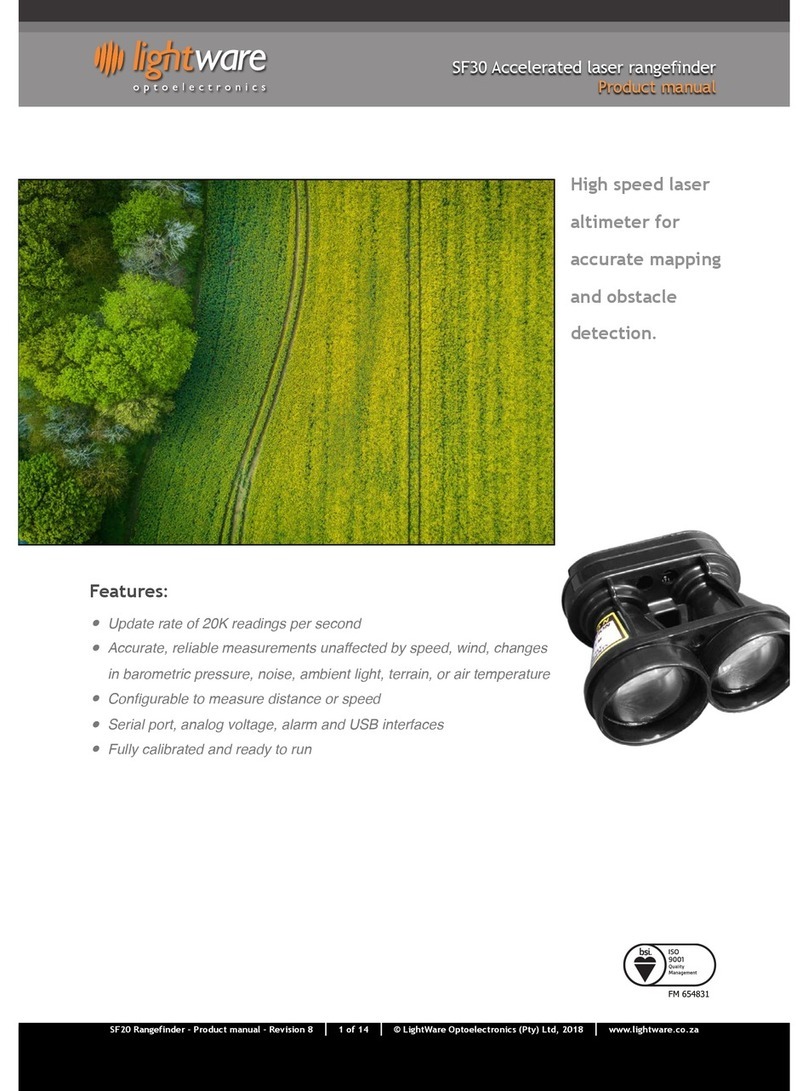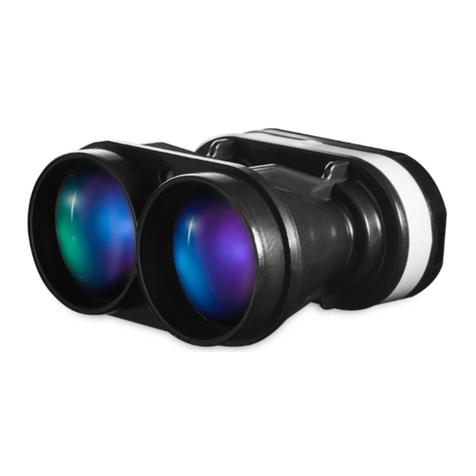SF11
SF11
Laser altimeter Product manual
Table of contents
Table of figures
Figure 1 :: The main features of the SF11 3................................................................................................................
Figure 2 :: Power from the USB port 5.....................................................................................................................
Figure 3 :: Regulated +5 V DC power supply connections 5..............................................................................................
Figure 4 :: USB communications 5...........................................................................................................................
Figure 5 :: Analog voltage connections 6...................................................................................................................
Figure 6 :: Serial interface connections 6..................................................................................................................
Figure 7 :: I2C interface connections 7.....................................................................................................................
Figure 8 :: LightWare Terminal showing menu options expanded 8....................................................................................
Figure 9 :: Altitude represented by distance (Serial / I2C) and analog voltage 10...................................................................
Figure 10 :: Alarm settings 11................................................................................................................................
Figure 11 :: Median Filter Response graph 13.............................................................................................................
Figure 12 :: Labelling on the SF11 14........................................................................................................................
Figure 13 :: Dimension drawings of the SF11 15...........................................................................................................
Product ordering codes
Disclaimer
Information found in this document is used entirely at the reader’s own risk and whilst every effort has been made to
ensure its validity neither LightWare Optoelectronics (Pty) Ltd nor its representatives make any warranties with respect the
accuracy of the information contained herein.
Product ordering codes 2.....................................................................................................................................
1. Overview 3...................................................................................................................................................
2. Quick start guide 4.........................................................................................................................................
3. Making connections to the SF11 5........................................................................................................................
4. Menu options 8..............................................................................................................................................
5. Instructions for safe use 14...............................................................................................................................
Appendix A :: Specifications 15..............................................................................................................................
Appendix B :: Dimensions 15.................................................................................................................................
Appendix C :: Main cable type 1, 35 cm 16................................................................................................................
Appendix D :: Connecting to Pixhawk Autopilot using “serial 4” 17....................................................................................
Appendix E :: Electromagnetic interference (EMI) graphs 17............................................................................................
Appendix F :: Command set 19...............................................................................................................................
Revision history 20.............................................................................................................................................
Model family Model name Model description
SF11 SF11/C (120 m) Laser altimeter, max 120 m
SF11 Laser Altimeter - Product Manual - Revision 6 of © LightWare Optoelectronics (Pty) Ltd, 20162 20
